A Word About our Travel Company - Guide to Faroe Islands
As mentioned, we contracted Guide to Faroe Islands to organise a five-day winter package tour for our visit to the Faroes. And to date, our dealings with the company and the organisation of our tour had been most impressive.
From our very first contact with Guide to the Faroe Islands in July 2022, co-founder and chief executive officer Høgni provided us with prompt, friendly and professional service which extended throughout, and even after our tour. And following a very difficult experience with a travel agent who after many months of communicating, had pulled out of our Greenland travels at the very last moment, it was a real pleasure to be in direct communication with the company management.
To our delight, Høgni had informed us just days before while we were in Copenhagen that we would be the only guests on our five-day tour. That morning however, he contacted us politely asking us if we would mind if another passenger joined us for the day. Of course, it was no trouble. Anyway, we could hardly complain as we had not booked a private tour. It was just the way it had worked out because of the low numbers of tourists in the winter season.
Meeting Simon
To our relief, the Brandan Hotel that morning was almost empty. It was quite bizarre after the huge nightclub scene crowds and the unbelievable noise we witnessed the evening before. The interior of the hotel was in fact very pleasant, if a bit austere. The buffet breakfast was excellent and being virtually the only guests there, it was extraordinarily quiet....
But after all, it was a Sunday and I fleetingly wondered whether the guests were hung over and still in bed; ashamedly prudish thoughts for someone who loves nothing better than a drink or two....
Looking out of the window, the hotel appeared to be in a quite isolated location on the slopes of a grassy hill, and much further away than we had anticipated from the harbour and main centre of Tórshavn.
In fairness however, the hotel was our travel company's recommended four-star upgrade accommodation and as we were based in Tórshavn for six nights, a good comfortable hotel was a priority..... And although we were disappointed with our accommodation the evening before, we were assured by the front desk manager that our upgraded room would be ready for us when we returned from our day tour.
On the dot of 9:00 am our guide Simon arrived at our hotel to collect us. A very pleasant young Englishman who had found his home now in the Faroe Islands, Simon proved to be a fabulous guide. In fact, his life experiences and personality bore a striking resemblance to our Russian guide and friend Edward - also an Englishman and teacher by profession who had found himself in another life in Siberian Russia. Knowledgeable, friendly and thoughtful, Simon was delightful company and a great resource. A resident of the Faroe Islands and married into a Faroese family, Simon's knowledge of the history, geography, economy, demographics and local culture was truly excellent.
Simon also spoke fluent Faroese language. Being a student of Russian language, I was most impressed and enjoyed our many conversations about the peculiarities of Faroese and Russian grammar; many of which possessed bizarrely interesting commonalities.
Furthermore, our car was spacious, modern and comfortable. A blessing for long limbed people like Alan. In fact, all the vehicles we toured in over the next three days were of high quality and immaculately clean.
It was also fortuitous that we were based each night in Tórshavn, eliminating constant annoying unpacking and re-packing, as well as lugging winter weight baggage into and out of a car to a hotel.
"I'm sorry that it's a bit quiet this time of the year" Simon commented as we drove out of the hotel grounds. He laughed however, when we told him of our nightclub experience the evening before. "Oh yes, that is an initiative to encourage more people to visit the islands for a weekend in the low season. Hotels would probably have to close in winter without such incentives.... But I am very pleased that you like things to be quiet".
If only we had known that the night before, we groaned inwardly.... We had visions of the hotel being a similar nightclub disaster scene every evening. Even still, we would not recommend booking a weekend evening in the Brandan Hotel during the low season. Unless you like the frenetic nightclub scene....
Our Tour Begins - First Stop Tórshavn Harbour
At this stage I must comment on what a misnomer it is to call a tour by a certain number of days; the first day being arrival and the last being departure. Of our Five-Day Winter Tour, this was in fact the second day; our unhappy few hours at the hotel the evening before being Day One.
So, a five-day trip is in fact just three days of touring. I understand that all travel companies practise this nomenclature, but it is misleading....
Our tour for the day would take us to five islands: the three larger islands of Streymoy (home to Tórshavn), Eysturoy and Borðoy, and the two smaller islands of Viðoy and Kunoy. Initially, it sounded like one hugely long trip in less than one full day but the islands are small and very compact, mostly connected by a series of very sophisticated sub-marine tunnels. And as Simon was to explain, "In the Faroes, you are never further than 5km from the coastline". It was certainly true. As we were to find, distances in the Faroes were incredibly short.
Our first stop was the capital city of Tórshavn where we stopped at Vestaravág Harbour to pick up our day passenger from the Tórshavn Hotel. Lyn, a sole New Zealand traveller was waiting outside for us. She was friendly, easy going, and good company. And we were very fortunate to have her as our co-passenger.
Lined with colourful low-rise buildings of distinctly Scandinavian architectural influence, Vestaravág harbour was delightfully attractive. Modern and sophisticated, it housed a staggering amount of yachts and expensive looking sea craft, including a huge Smyril line cruiser. And from what we could glimpse Tórshavn at least, was definitely no backward, quiet city. It simply oozed with prosperity..... And tourism. Attractive as it was, it certainly was a bit of a surprise for us.
Prior to booking our tour, we had looked at the Tórshavn Hotel for our accommodation. A three-star premises, it was beautifully located right on the pretty Torshavn harbour foreshores.
Fleetingly, I thought of our isolated and rather austere Hotel Brandan. Would we have been best to have booked the Tórshavn Hotel I wondered? But by this time, there was nothing we could do about it. And after all, we were going to be upgraded to a better room.
FAROE ISLANDS AT A GLANCE.....
As Simon drove us from Tórshavn north-east along the island of Streymoy, he chatted about the islands; their history, geography and demographics. Being a "foreigner" who had made his home in the Faroes, he was well equipped to provide a unique insight into the culture of the islands from both an outsider's and a Faroese native's view. Furthermore, Simon was an excellent communicator whose easy, friendly manner made the days of our tour both interesting - and for my blog writing - extremely useful.
History at a Glimpse: A Struggle for Independence
Faroe Islands, like our recently visited destination of the Norwegian archipelago of Svalbard, remains for us somewhat of an enigma. And in all honesty, during the relatively short time were there, we never really came to terms about how the island nation with just 58,000 people, operated as an autonomous territory, yet remained an integral part of the Kingdom of Denmark....
From 1035 to 1814, Faroe Islands were in fact part of the Kingdom of Norway, which became part of a union with Denmark from 1380. In 1814, the Treaty of Kiel transferred Norway to Sweden. Denmark on the other hand, kept its Atlantic territories which included Faroe Islands, Iceland* and Greenland. In 1816, the Faroe Islands became a county within the Danish Kingdom and in 1849, Denmark legally assumed the islands.
*Note: Interestingly, Iceland became a republic in June 1944, when after a growing movement for independence, 97% of voting Icelanders opted in favor of formal separation from Denmark. This vote occurred only four years after Denmark had succumbed to the invading German army.
Relationships between Denmark and the Faroes have been extraordinarily complex, and from what we can gather, they still are today with a certain degree of tension on both sides.
In earlier times, Denmark maintained a monopoly over trade with the Faroes, forbidding the inhabitants from trading with other nations. The Faroe's rapid development in the mid-1800's as a serious fishing nation, equipped with its own fishing fleet, with fish and fish products making up more than 40% of all exports, was however having a significant impact on its desire for independence. In 1856 the Danish Trade Monopoly was formally abolished.
The national awakening for independence was further catalysed by a struggle to maintain the native Faroese language. Danish law was supreme with Danish language being used in all official communications. As resentment toward Denmark escalated, cultural independence became increasingly nationalised, with the foundation of political parties within the Faroe Islands.
During the first year of World War II, Germany quickly invaded Denmark. British troops then occupied the Faroe Islands in a valiant effort to keep them from Nazi control; a move to hopefully offer a buffer to the strategically important Atlantic Ocean shipping lanes. Given their strategic location in the North Atlantic, the Faroes could have proved invaluable to Germany in the Battle of the Atlantic, possibly as a submarine base. Instead, the British forces built an airbase on Vágar Island which is still in use as the Faroe's International Vágar Airport. At the time, British unofficial support for Faroese independence further inflamed an already delicate relationship with Denmark.
The Faroese aspiration for independence was indeed a tumultuous path. Following the war, a referendum in 1946 resulted in 50.73% of Faroese in favour of independence. The result however, was annulled just days later by the Danish government, causing understandable indignity amongst the proud Faroese. Finally, with growing movements in favour of self-government, Denmark in 1948 passed the Home Rule Act, granting Faroe Islands home rule with a high degree of local autonomy. It would however, formally continue to be part of the Danish Kingdom.
Today the Faroese "Løgting" (one legislative parliament) has shifted from being a mere county of Denmark to a "self-governing community within the Kingdom of Denmark". Sounds confusing? Well, yes.... The Faroe islanders have a substantial amount of self-rule but there are some real inconsistencies.
The Løgting is now wholly democratic. They have their own Prime Minister (the Løgmaður or Chief Justice) and government, parliament, flag, currency, national airline and god forbid, even their own football team! The governing powers include the rather bizarre portfolio of government affairs such as taxation, customs, communications, education, sanitation, the post office - and most importantly for the Faroese - trade.
Unlike Denmark however, the Faroe Islands are not part of the European Union (EU) and all trade with EU countries is governed by specially negotiated treaties drawn up in consultation with the Danish foreign ministry. Denmark is still responsible for policing, defence and justice. And interestingly, while Faroese is the national language, Danish must be taught in all schools.
The Faroe Islands have benefitted financially from their link with Denmark. They pay no direct taxes to Copenhagen but have received substantial subsidies. For a while, the Faroes were enjoying some of the world's highest standards of living. Extensive roads and tunnel building brought the island communities closer together but the cost per head was astronomical. The Faroese were living on borrowed time, and borrowed money. When the annual catch of fish stocks in the northern Atlantic fell, the financial consequences for the Faroese community were catastrophic. The national bank collapsed and in 1992, the Faroese had no choice other than on two occasions, to ask Denmark for financial aid. A financially complex situation arose resulting in a considerable degree of tension on both sides.
The fishing industry survived largely intact. Fish stocks rose, and in addition, oil was discovered near the islands. By the early 21st century weaknesses in the Faroese economy had been eliminated and, again Faroese sentiment turned again to the possibility of independence from Denmark. A planned referendum in 2001 however, on first steps towards independence was called off following the Danish Prime Minister's statement that Danish money grants would be phased out within four years if there were a "yes" vote. Yes, the old adage of “You can always back self-interest as a key decision maker”…..
Today, fishing continues to be the strongest pillar of the economy. Apart from intensive fish farming, the islands operate a 200-mile exclusion fisheries zone offshore. With around 200 fishing vessels working the North Atlantic, the fleet is amongst the most modern afloat. Today some 90% of exports are farmed and wild fish, or fish-related products; a situation that could lead to potential economical vulnerability should problems such as disease resulting from intensive fish farming, arise with domestic fish stocks.
Tourist numbers are also beginning to rise dramatically, providing yet another boost to the Faroese economy. And now there is fierce debate amongst landholders about land access to foreign tourists. The intention of the Faroese government is to gradually take control over all of the islands' affairs in preparation for full independence some time on the future. Not surprisingly, public opinion is deeply divided, not in the least because of generous subsidies poured into the islands by the Danes. Who knows how this tricky situation will pan out?
JOURNEY: EYSTUROY ISLAND
To Leirvik - Observations of our Surrounds
I dislike tunnels. Or perhaps I just don't like being underground with no "periscope" to provide orientation of our whereabouts.
Undeniably tunnels provide wonderful efficient access to the many islands of the Faroes, but they are disorientating (not that that is particularly difficult for my orientationally-challenged brain) and somehow I rather miss either experiencing coastlines or in other cases, climbing summit roads or rail lines of coming mountains. And travelling through the Faroe Islands' tunnels really took away the feeling that we were in fact, travelling from one island to another.
Interestingly, orienting ourselves in the Faroe Islands was mind-blowing for both of us. Although the roads were excellent, once again we were highly relieved to have Simon as our guide and driver.
In no time we had driven from Tórshavn along the north-eastern coast of Streymoy and via a sub-marine tunnel, were now on the second largest island of Eysturoy - heading at a rapid rate to our third island of Borðoy - via a third tunnel.
The countryside was spectacular; steep forbidding mountains giving way to magnificent cliff faces and the steely grey waters of the northern Atlantic Ocean. The landscape although bare, was hauntingly beautiful. Black-faced sheep wandered freely along the roads; the scenery punctuated by tiny villages housing pretty turf covered, brightly painted or often jet-black cottages. The whole feeling of the islands was that of order - and wellbeing.
One of our first observations however, was the complete lack of trees, and for that matter, the very sparse vegetation. There are in fact, no indigenous trees to the largely unprotected, windswept Faroes. We were used to harsh tundra environments but what we had experienced was mostly in the extreme Arctic. And even then, even at very high latitudes, there were forests of spruce and larch species. Instead, tufty grass lined exposed hills and valleys.
Another observation during our travels was that there was no visible snow. The climate here is totally dominated and buffered by the warm currents of the Gulf Stream. In winter, temperatures are relatively mild for such a high latitude; harbours never freeze and although snowfall does occur it is generally short-lived. The islands experience average temperatures between +3°C and +11°C in summer. Being late winter, it was certainly cool but we were surprised that temperatures were still very much above freezing point.
Simon made much of what he described as "good weather". In all honesty, for us it looked pretty overcast and nothing too wonderful. Little were we to appreciate at that stage, was that Faroe Islands experiences on average 210 rainy days per year. Later, we were to hear that the week we were in the Faroes was the first fully dry week for some 18 months!
The Faroes lie in the stormiest part of the North Atlantic, directly in the path of most of the Atlantic depressions and as a result days are mostly cloudy, wet and windy for most of the year. Later, Simon told us of times when tourists had experienced their entire week's tour being windswept and lashed by heavy rain, the most beautiful of views entirely obscured by rain or thick fog. The weather is certainly a factor to consider when travelling to the Faroes. We had to smile however, upon reading the overly optimistic tourist literature which warns that you can experience several seasons in one day. There is apparently a Faroese saying “If you don’t like the weather, just wait for five minutes!” Our overcast day was looking infinitely better….
Leirvik
Our journey quickly took us to the village of Leirvik on the very eastern edge of Eysturoy Island. Once an important ferry harbour, with the Norðoyatunnilin (sub-marine tunnel) to Klaksvik on the adjacent island of Borðoy, it is now more importantly known for its intensive fishing industry. Today, Leirvik has a population of 1,027 (2023).
To Klaksvik, Borðoy
Our 9 km journey from Leirvik to Klaksvik, Borðoy via the Norðoyatunnilin Tunnel took us exactly 10 minutes; testimony to the significant difference the sub-marine tunnels would have made to travel around the Faroe Islands during the days when ferries were the only means from crossing from one island to another.
Klaksvik is the second largest town in the Faroe Islands. With a population of 5,015 (2022), it is the main economic and administrative centre, fishing port and transport hub for the Northern Islands (Norðayar Region). This pretty settlement is fantastically located, huddled around a U-shaped inlet; an isthmus located between two fjords.
Opposite the township lies the island of Kunoy with its imposing pyramid shaped Kunoyarnakki Mountain.
Klaksvik's beautifully sheltered harbour houses a massive fleet of state-of-the-art fishing vessels which service the company Kósin Seafoods, one of the largest fish processing plants in the Faroe Islands. Interestingly Klaksvik is also home to a brewery, the Föroya Bjór which has grown into Denmark's biggest and best beer producer.
Klaksvik was also home to Simon's wife Yulia's family, and where Simon and Yulia had purchased a home - although for work purposes they still lived in Tórshavn. On our arrival in Klaksvik, we stopped to pick up Simon's father-in-law Gunnar who accompanied us for the remainder of our journey around Borðoy, Viðoy and Kunoy. A lovely gentle man and the owner of the family travel company for which Simon worked, he was a mine of information about Klaksvik and the Faroe Islands. From Klaksvik, Gunnar took over the driving, freeing up Simon to point out some of the interesting sights of the island.
Hvannasund, Viðoy.
From Klaksvik, we travelled north past the coastal village of Anirnar, then east where we crossed over the causeway at Norðdepil to the village of Hvannasund on the island of Viðoy. On a sunny late morning, the scenery was nothing short of idyllic.
At Hvannasund, we stopped to view the quaint red-roofed Lutheran Church. Built by locals in 1949, the church is located in a most picturesque location on the western coast of Viðoy.
From Hvannasund to Viðareiði - Discussions About Religion in the Faroe Islands
From Hvannasund, we drove north toward the village of Viðareiði on the western coast of Viðoy. During this time, Simon and Gunnar talked about religion in the Faroe Islands.
Religion is extremely important in the Faroe Islands and very much part of the every day lives of the local people. Over 80% of people belong to the Evangelical-Lutheran Church, with over 60 churches in the islands. The other major religion is Plymouth Brethren which comprises around 13% of the population. Other religions include Catholicism, the Salvation Army, the Pentecostal Movement, Seventh Day Adventists, Jehovah's Witnesses, the Philadelphia Congregation and the Bahai'i faith.
Simon went on to carefully explain that due to a strong temperance movement as well as religious objections from islanders, alcohol sales have only become (relatively) freely available since 1992. Before then, a type of public prohibition prevented the production of alcohol; any alcoholic beverages having to be shipped in from Denmark. While alcohol is now available in bars and restaurants, it is very expensive. Furthermore, it is still restricted by legislation. You cannot simply purchase it from supermarkets; the only outlets being the state-owned Rúdsdrekkasøla Landsins, of which there are only six outlets in the Faroes. Opening times are also restricted. The legal drinking age in the Faroe Islands is 18 years of age.
Viðareiði
The drive to Viðareiði was glorious. The sun had miraculously (according to Simon and Gunnur) appeared, highlighting steep shaved-grass mountains and providing a remarkably soft velvety effect to a normally harsh windswept environment. The road north hugged the western vertical cliff coastline of Viðoy, offering spectacular views of neighbouring Borðoy and Kunoy, as well as the numerous circular fishponds used for the commercial intensive fish farming of local salmon.
Viðareiði village lies on an isthmus covering 30 square km nestled between steep mountains on the northern tip of Viðoy. It is home to around 350 people. The main industries are wild fishing and fish farming.
The village features the Viðareiði Kirkja, a charming old church with sensational views between the islands of Viðoy and Borðoy to the Atlantic Ocean. The present-day church was consecrated in 1892, but there have been former churches on the same site. In the 17th century, the oldest church was destroyed in a storm. It is said that part of the cemetery was washed away out to sea, and some of the coffins that arrived on the shores of Hvannasund, were rescued and re-buried in Viðareiði.
The present-day church was built from stones taken from the coastline. Apparently, the men of the parish were required to carry stones to the site of the church; each man having to carry 24 stones per year for two years. On the northern wall is an altar plate which is one of the oldest known in the Faroe Islands. It was donated by Thomas Koppen from Hamburg who obtained a monopoly on trade in 1533. Furthermore, the British Royal Navy donated substantial church silver to the people of Viðareiði in appreciation and acknowledgement of the village's help in rescuing and caring for the survivors of the English shipwrecked brig Marwood, in 1847.
During or stay at Viðareiði, Simon pointed out to us the strange deserted settlement of Múli across the ocean to the north-eastern coast of Borðoy. This tiny encampment has been settled for centuries; its inhabitants leading a simple rustic lifestyle subsisting on whatever was available from the surrounding mountains. Located in a stunningly beautiful setting, over the years this tiny hamlet was barely able to sustain a population - and it was not until 1970 that electricity came to the village. Years later, when the prospect of Múli becoming completely abandoned became reality once again, a road was finally built to link the community with the small town of Noroðdepil. Sadly, not even these measures could save the settlement and after its several hundred years of survival, Múli was abandoned.
Our lunch stop was at one the roadhouses near Viðareiði. As we were to find, the roadhouse stations offered a surprisingly good variety of tasty practical food - salmon bagels, sandwiches and rolls as well as what Lyn, Simon and Gunnur chose - rolls with frankfurter's pieced into the middle and slathered with mustard or sauce.
Unfortunately, Alan and I were still suffering the effects of our stomach illnesses, and could barely manage to share a salmon bagel. Sadly, we couldn't even look at the frankfurters.... We enjoyed our lunch at a lookout with glorious views over the Atlantic Ocean to the vertical cliffs of the island of Fugloy.
A really nice touch was Simon buying us some local beer which he had kept cold during our travels. Knowing that we appreciated a drink, he had bought several varieties of tiny cans. Funnily enough, it didn't seem to worry our stomachs.... It was not to be the first time Simon had brought along a bag of special local goodies for us. Small but thoughtful gestures, they were very much appreciated.
Last Leg of Our Day Trip - Kunoy
Our final visit for the day was to the lesser-known island of Kunoy (also known as "Woman Island"). Located between Kalsoy to the west (with which there is no physical link) it is linked by a causeway to Borðoy to the east.
There are only two settlements on Kunoy: Kunoy and Haraldsunnd (populations of 64 and 69 people respectively, 2021) on the south-east coast. Haraldsunnd is where the causeway links Kunoy to Borðoy.
Interestingly, there was once a third settlement on Kunoy. Skarð however, was the site of a tragic fishing incident on Christmas Eve 2013 which killed seven of the nine men (with the exception of a 14 year old boy and a 70 year old man) from the settlement. Following the accident, all the women decided to move to Haraldsunnd, and the village is now abandoned.
Kunoy Island is apparently one of the most pictureseque of all of the islands; a feature being the alternating steep mountain slopes and rounded valley formations surrounded by immense walls of basalt. Kunoy Island is also famous as a significant bird breeding site, especially for the European Storm Petrels.
We only had time to visit the village of Kunoy which is described by Faroe Islands Brandt Guide in a rather disappointing terms".....an uneventful little place, whose best feature is the picturesque cluster of houses that make up the eponymous village (of the same name as the island) overlooking the steely waters of Kalsøyarfjorður, perfect for photographs and barely 12 km from the centre of Klaksvik...."
There was no doubting that Kunoy village was pretty. Its turf-roofed houses, attractive church and running stream, indeed making it a perfect place for photographs. Unfortunately, there was not enough time for us to explore the island any further.
Back to Our Hotel: a Pleasant Surprise!
For such a comprehensive tour, covering five of the islands, it was amazing that we arrived back at our hotel in Tórshavn right on the dot of 3:00 pm.
It was in my view, slightly disappointing that we could not have added a little extra time exploring Kunoy. But in fairness, it was the finishing time stipulated by the travel company....
The nicest surprise was that we had been upgraded to a very pleasant spacious hotel room. And what a difference a decent hotel room makes. Bliss!

 Tórshavn, Streymoy, Faroe Islands
Tórshavn, Streymoy, Faroe Islands
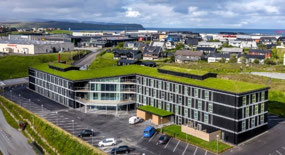
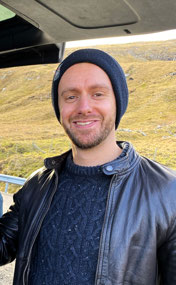
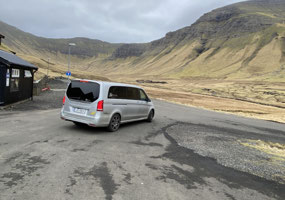
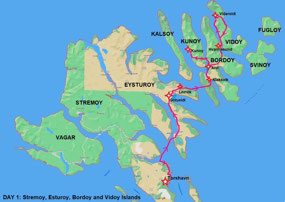
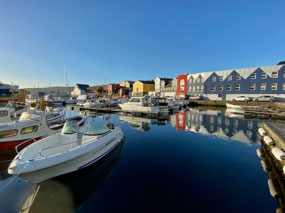
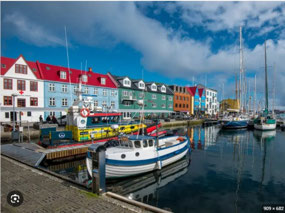
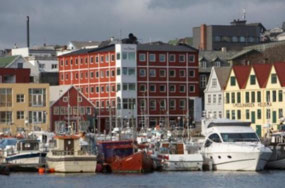
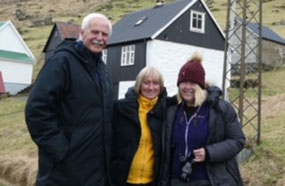
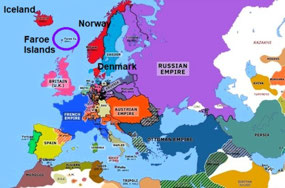
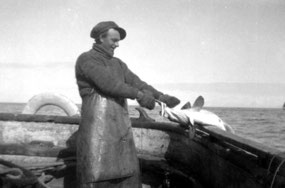
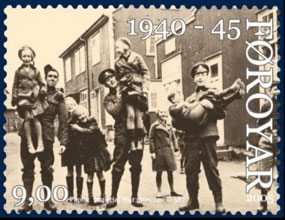
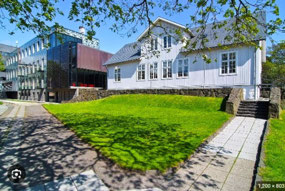
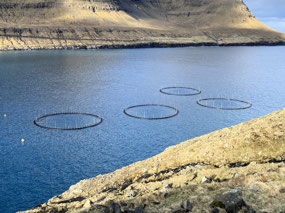
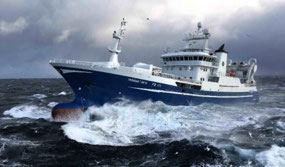
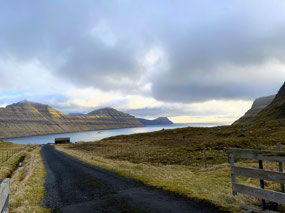
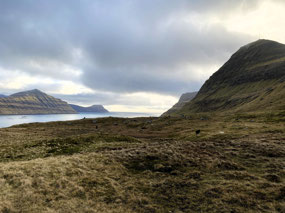
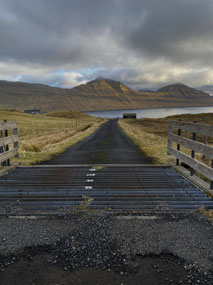
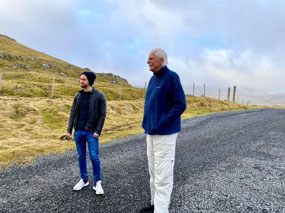
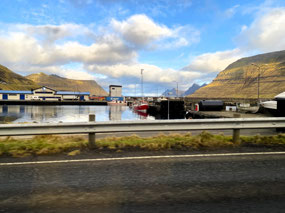
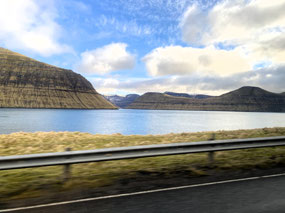
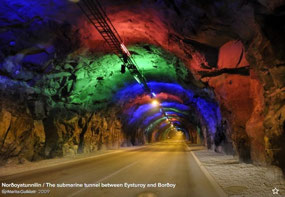
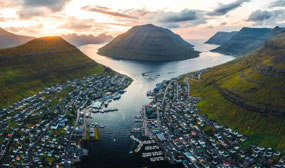
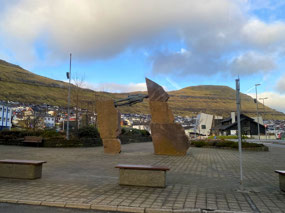
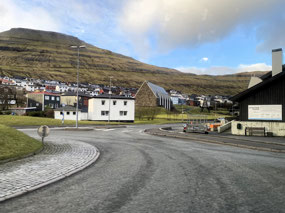
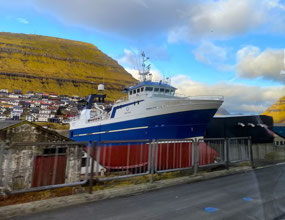
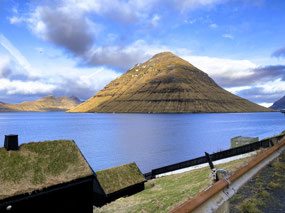
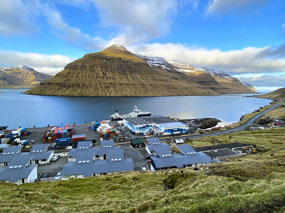
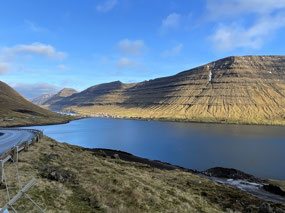
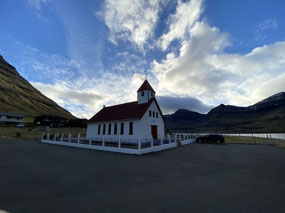
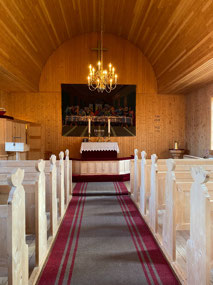
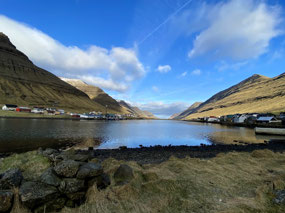
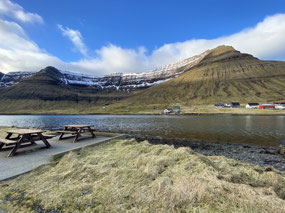
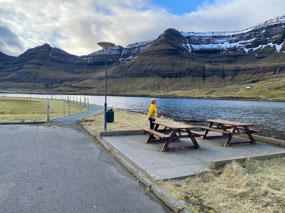
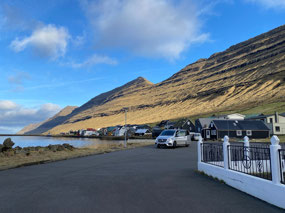
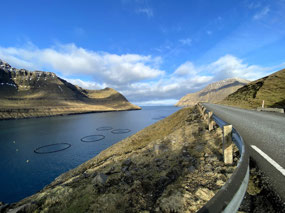
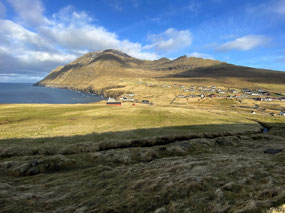
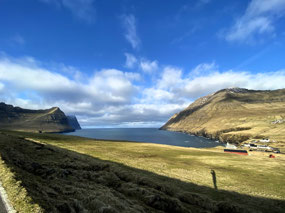
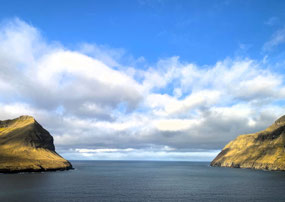
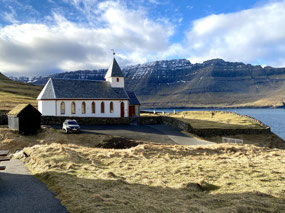

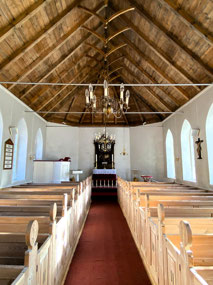
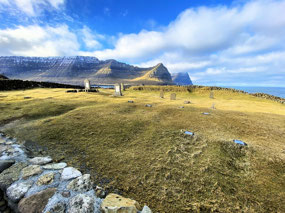
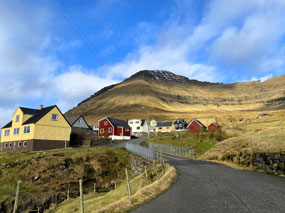
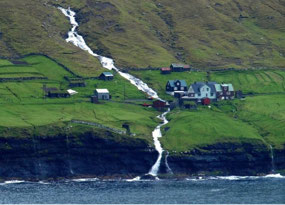
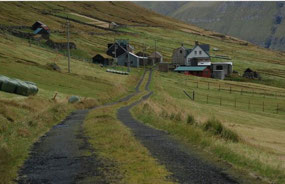
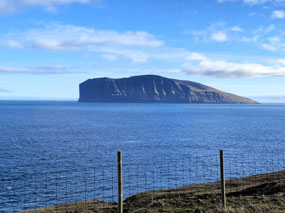
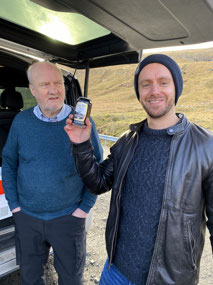
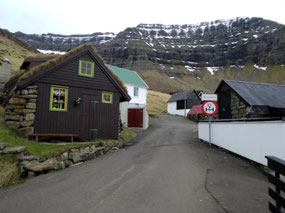
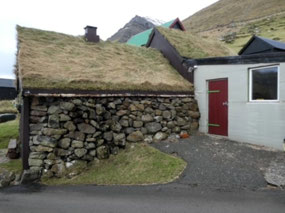
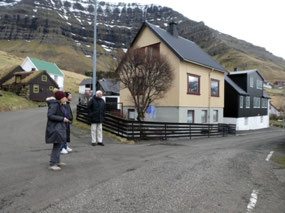
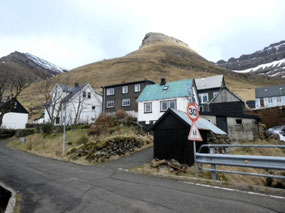

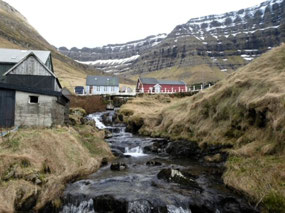
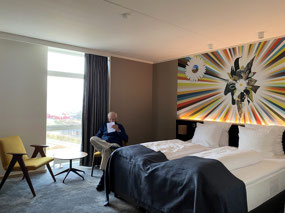








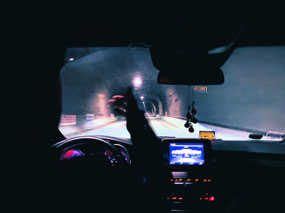
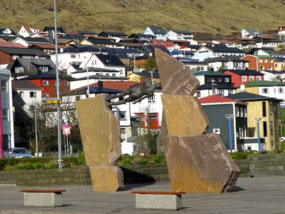
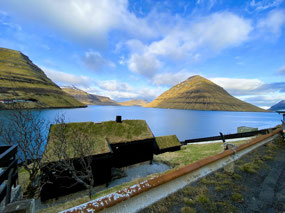
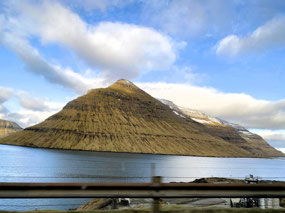
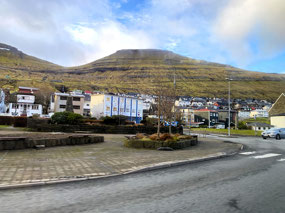
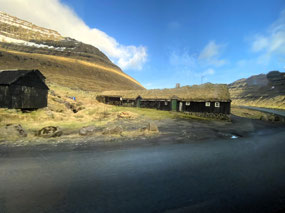
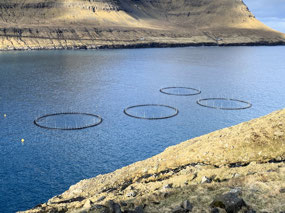
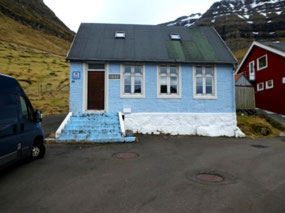
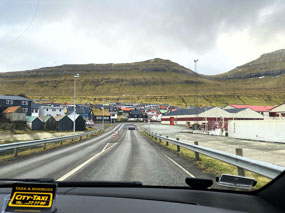
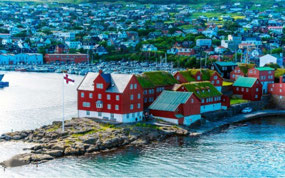

2025-05-22